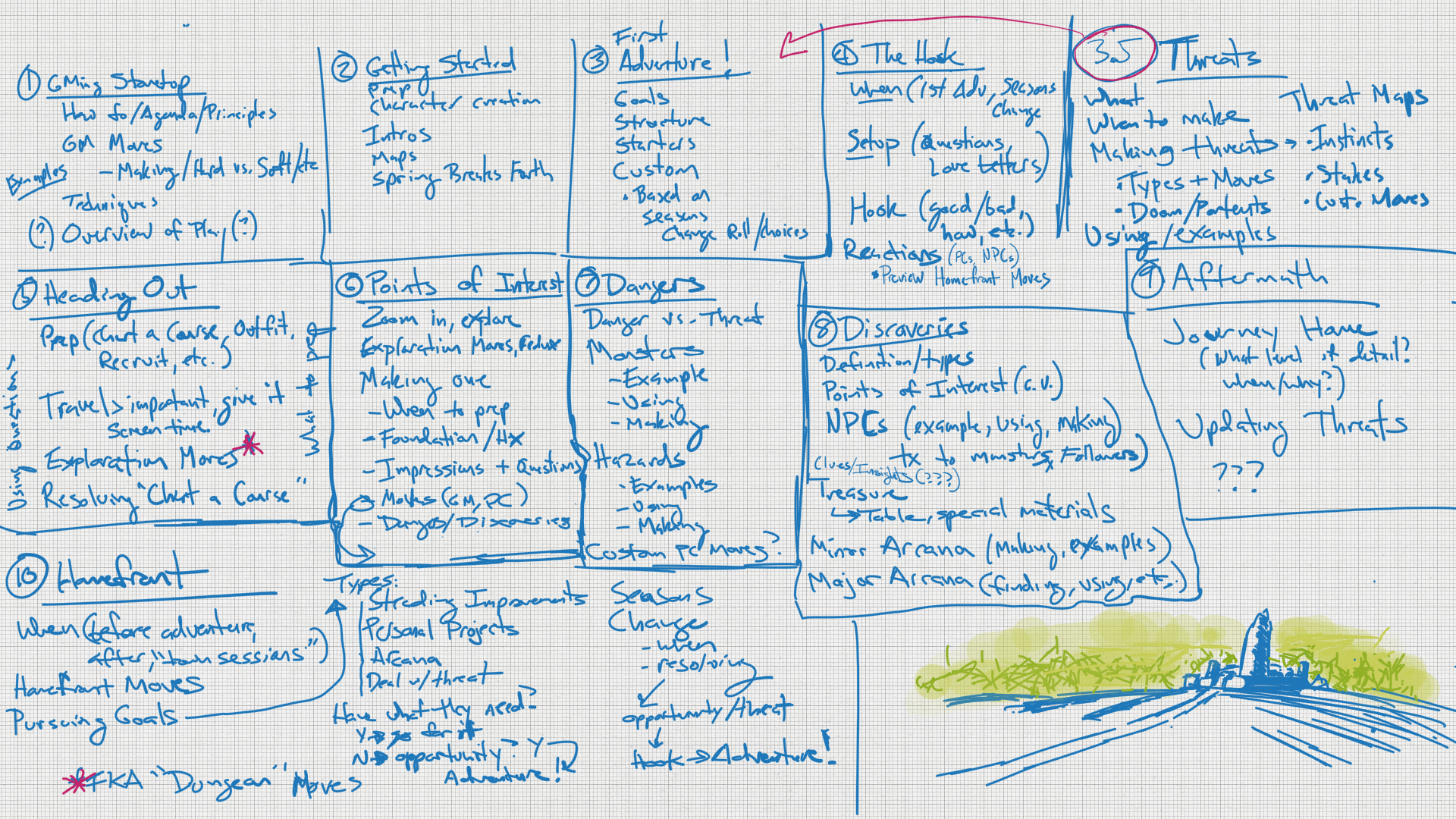In my home game/Stonetop, I’ve been toying with changing the Ranger’s Hunt and Track move to this:
Originally shared by Jeremy Strandberg
In my home game/Stonetop, I’ve been toying with changing the Ranger’s Hunt and Track move to this:
HUNT AND TRACK
When you spend a few moments to scan your surroundings, you can ask the GM “What tracks or other signs of passage are present here?” and get an honest answer.
When you Discern Realities by studying tracks or other signs of passage, take +1 and add “Where did they go?” to the list of questions you can ask.
==================
By contrast, here’s the original move:
HUNT AND TRACK
When you follow a trail of clues left behind by passing creatures, roll+WIS: on a 7+, you follow the creature’s trail until there’s a significant change in its direction or mode of travel; on a 10+, you also choose 1:
* Gain a useful bit of information about your quarry, the GM will tell you what
* Determine what caused the trail to end.
==================
Reasoning:
The original move is… okay. I like that it’s a move where 7-9 gives you a full success and a 10+ gives you something extra. The things I dislike about it, though, are:
1) It sorta implies that you need that move in order to follow a creature’s trail. But really, you could get basically the same info by closely studying a set of tracks, triggering Discerning Realities, and asking “What happened here recently?” “Well, there was a fight, and this guy got killed, and then the victor skulked off down this tunnel.”
2) Nothing about the Hunt & Track move makes you particularly better and noticing that there are tracks in the first place. I guess that the fact I have the move, as a player, makes me more likely to ask the GM “Are there any tracks here?” and the GM should then be a fan and think about it and be like “yeah, totally, tracks!”
But I’ve see too many players not do that, or just forget that they have the move until I as the GM offer an opportunity fitting a class’s abilities and then prod them a little.
3) It doesn’t really lend itself to that scene in The Two Towers, where Aragon’s like “A hobbit lay here…” and then recreates the events in his head based on the tracks. Yeah, that’s totally Discern Realities and not really “following a trail,” but that’s the kind of thing I wan the ranger with this move to be able to do. They should be able to Sherlock the place up.
4) In Stonetop, rangers don’t automatically start with the Hunt & Track move unless they pick the “Mighty Hunter” background. So it’s pretty important to me that the move be “worth” the choice and that it not imply you can’t track creatures without this move.
Anyhow… interested in opinions! How do you like the proposed revision vs. the original move? How heavily does Hunt & Track get used in your games? Have you had parties without rangers that followed tracks? How’d you resolve it?


